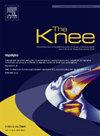Long term outcomes of residual valgus alignment after total knee arthroplasty for valgus knee deformity: a minimum 10-year follow up
IF 2
4区 医学
Q3 ORTHOPEDICS
引用次数: 0
Abstract
Background
This study aimed to evaluate the impact of postoperative hip-knee-ankle (HKA) angle on clinical outcomes and survivorship in total knee arthroplasty (TKA) patients with valgus knee.
Methods
We retrospectively reviewed TKAs performed for valgus knee deformity between January 2005 and February 2015. Patients were categorized into two groups based on postoperative HKA angle: neutrally aligned (0° ± 3°) and residual valgus groups (>3°). Preoperative and postoperative clinical outcomes, including the Western Ontario and McMaster University Osteoarthritis (WOMAC) Index and Knee Society Scores (KSSs), as well as radiographic parameters such as HKA angle and lateral distal femoral angle (LDFA), were compared between the groups. Survivorship analysis was also conducted.
Results
A total of 73 knees (64 patients) were included, with a mean follow-up period of 140.1 ± 14.4 months. Of these, 55 and 18 knees were classified as neutrally aligned and residual valgus group, respectively. The preoperative HKA angle and LDFA were significantly different between the two groups. Postoperative LDFA (88.6° ± 1.8° vs. 86.7° ± 1.7°, P < 0.001) differed significantly. However, long-term WOMAC Index and KSSs were comparable. The cumulative survival rates were 96.4 % in the neutrally aligned group and 100 % in the residual valgus group, with no significant difference (P = 0.322).
Conclusion
The residual valgus group exhibited more severe preoperative femoral valgus. Primary cause of postoperative residual valgus was residual femoral valgus. Residual valgus alignment was not related to inferior long-term clinical outcomes and survival rates compared to neutrally aligned TKA for preoperative valgus deformity.
外翻膝畸形全膝关节置换术后残留外翻对准的长期结果:至少10年随访。
背景:本研究旨在评估髋关节-膝关节-踝关节(HKA)术后角度对膝外翻全膝关节置换术(TKA)患者临床结局和生存率的影响。方法:回顾性分析2005年1月至2015年2月间为外翻膝关节畸形行tka的病例。根据术后HKA角度将患者分为两组:中立对准组(0°±3°)和残留外翻组(>3°)。比较两组患者的术前和术后临床结果,包括Western Ontario and McMaster University Osteoarthritis (WOMAC) Index和Knee Society Scores (KSSs),以及HKA角和股骨外侧远端角(LDFA)等影像学参数。还进行了生存分析。结果:共纳入73个膝关节(64例),平均随访时间140.1±14.4个月。其中,55膝和18膝分别被分类为中性排列组和残留外翻组。两组术前HKA角度及LDFA差异有统计学意义。术后LDFA(88.6°±1.8°vs 86.7°±1.7°,P)结论:残余外翻组术前股骨外翻更为严重。术后残留外翻的主要原因是股外翻残留。与术前外翻畸形的中性对齐TKA相比,残余外翻对齐与较差的长期临床结果和生存率无关。
本文章由计算机程序翻译,如有差异,请以英文原文为准。
求助全文
约1分钟内获得全文
求助全文
来源期刊

Knee
医学-外科
CiteScore
3.80
自引率
5.30%
发文量
171
审稿时长
6 months
期刊介绍:
The Knee is an international journal publishing studies on the clinical treatment and fundamental biomechanical characteristics of this joint. The aim of the journal is to provide a vehicle relevant to surgeons, biomedical engineers, imaging specialists, materials scientists, rehabilitation personnel and all those with an interest in the knee.
The topics covered include, but are not limited to:
• Anatomy, physiology, morphology and biochemistry;
• Biomechanical studies;
• Advances in the development of prosthetic, orthotic and augmentation devices;
• Imaging and diagnostic techniques;
• Pathology;
• Trauma;
• Surgery;
• Rehabilitation.
 求助内容:
求助内容: 应助结果提醒方式:
应助结果提醒方式:


